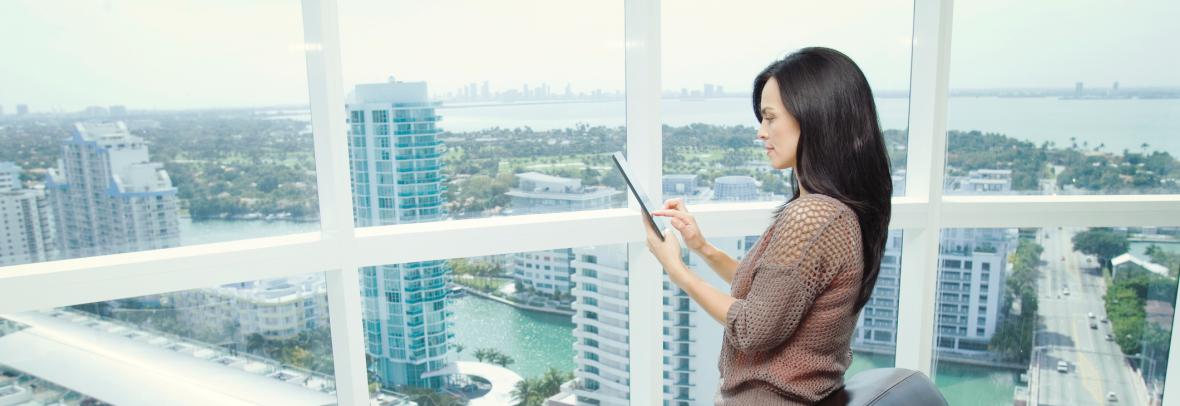
Florida Realtors economist: Real estate’s residential side has been on fire since summer 2020. How has the commercial side fared? It’s hot – and it’s not. It depends on where you look. The delta variant of COVID-19 slowed the office market even as it relit a fire under other commercial sectors.
ORLANDO, Fla – How has the pandemic – and its delta variant resurgence – impacted the U.S. commercial real estate market?
The National Association of Realtors Research Group recently published their latest “Commercial Market Insights – September 2021” report. The insights come from NAR’s Quarterly Commercial Market Survey conducted among its commercial members to gather information about their local market conditions. In the latest survey, respondents were asked how members are adapting to the pandemic and general market observations.
Headline takeaways
The delta variant took a bite out of expected office occupancy gains, as companies halted their expected return-to-work push or slowed plans until the fall. The limited return of business travel also impacted tourism numbers, particularly since convention season was expected to bring business travelers back in droves.
Now that hybrid or entirely remote work options are taking hold, tenants increasingly opt for smaller office spaces and shorter lease terms: 65% of survey respondents reported more businesses leasing or moving into offices with smaller square footage; 54% reported more short-term leases of less than two years.
With a glut of sublease inventory coming to market, tenants are increasingly in the driver’s seat at the negotiating table. Companies underutilizing their space foresee this being the case for the mid-long term, and they’re cutting bait and putting some or all of their space back on the market. This space is competing with vacant space, and can be more attractive if the amount of square footage and remaining lease term resonates with other businesses looking for a small space and a shorter term.
Landlords are being hit with increased construction and labor costs, making tenant improvements more expensive. Tenant retention is key, as recruitment and onboarding is more expensive than in typical times. Suburban office is the darling this cycle, as people grow weary of being home but still desire an alternative to the “typical commute to the headquarters” workweek. Companies are expanding with satellite offices in suburban markets to offer employees that alternative.
Several Florida markets have stronger market conditions compared to the overall U.S. market, particularly Miami, Palm Beach and Daytona Beach. Strong in-migration, affordable residential property and commercial returns allow assets in these markets to offer higher returns.
Drivers of demand
Certain office markets continue to recover, particularly among sectors like finance and insurance, real estate, information services, and professional and business services. While overall employment hasn’t returned to pre-pandemic levels, these sectors continued to hold on to employment more steadily than leisure and hospitality, and retail trade. Increased home sales and e-commerce have helped pull a lot of these industries forward.
Vacancy
Vacancy compression has been most aggressive in the multifamily, retail and industrial sectors. This again is fueled by a healthy housing market – when people buy homes, they buy the stuff to go in them. The housing market in some areas is so hot that would-be buyers are opting out of the purchase process and electing to sit on the sidelines in a rental, helping occupancy in this sector. Unsurprisingly, the office sector continues to see overall net negative absorption quarter after quarter, though the decline is steadily improving.
PUT GRAPH HERE
Rents
Rent growth is highest in multifamily, again driven by strong demand from people moving out on their own or discouraged to purchase due to high prices. Some buyers are also choosing to “sell to rent” – selling their current home to cash in on the high prices, pocketing the equity, then moving into a rental until they perceive prices are more in line with their next purchase. Industrial is also seeing strong rent growth fueled by tight vacancy and increased demand. While retail is faring better from an occupancy perspective, a glut of existing space on the market makes it hard for landlords to aggressively push rental rates up. The office market, for example, is seeing negative rent growth due to lackluster demand and steady supply from the sublease side of the market.
Construction
It’s a tale as old as, well, this cycle. Construction never kept pace with demand coming out of the Great Recession for a myriad of reasons. As a result, oversupply is rarely a problem in most markets. Coming through the last 18-months, supply chain disruptions and increased prices on construction materials has made the construction process more expensive. Labor continues to be an issue, particularly in markets where a heavy emphasis on single-family construction competes for the same construction workers.
Jennifer Warner is a Florida Realtors economist and Director of Economic Development
© 2021 Florida Realtors®
Go to Source
Author: kerrys



